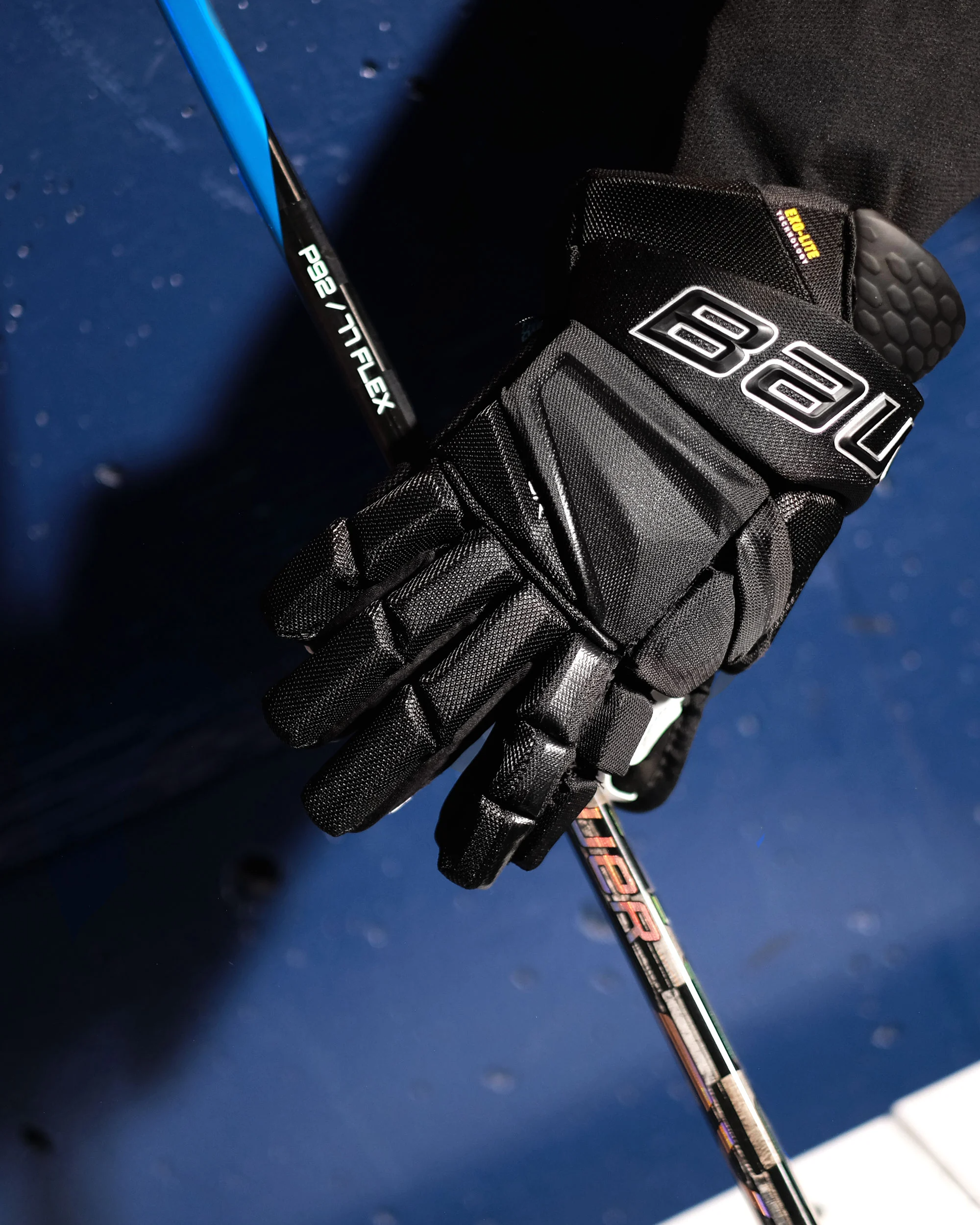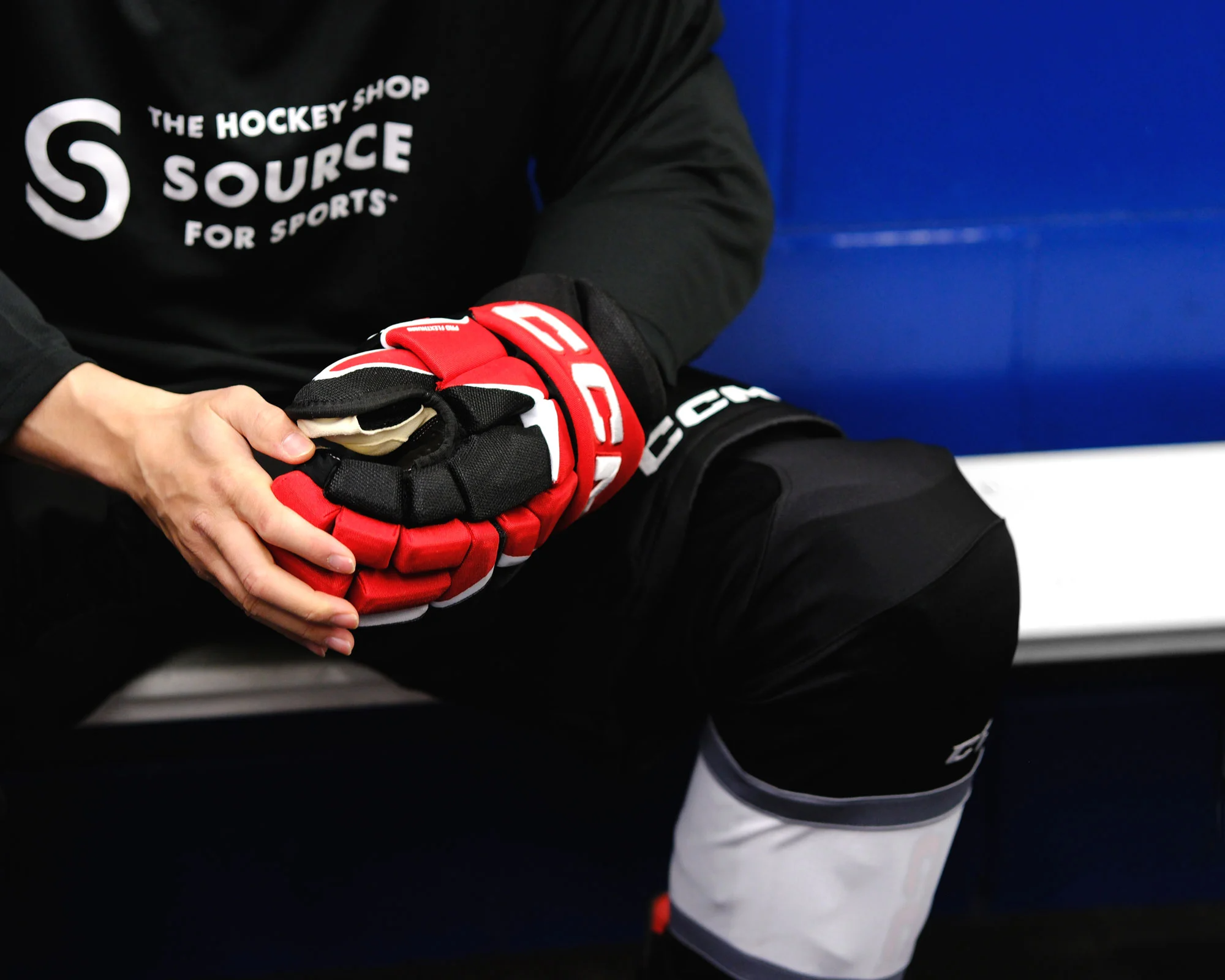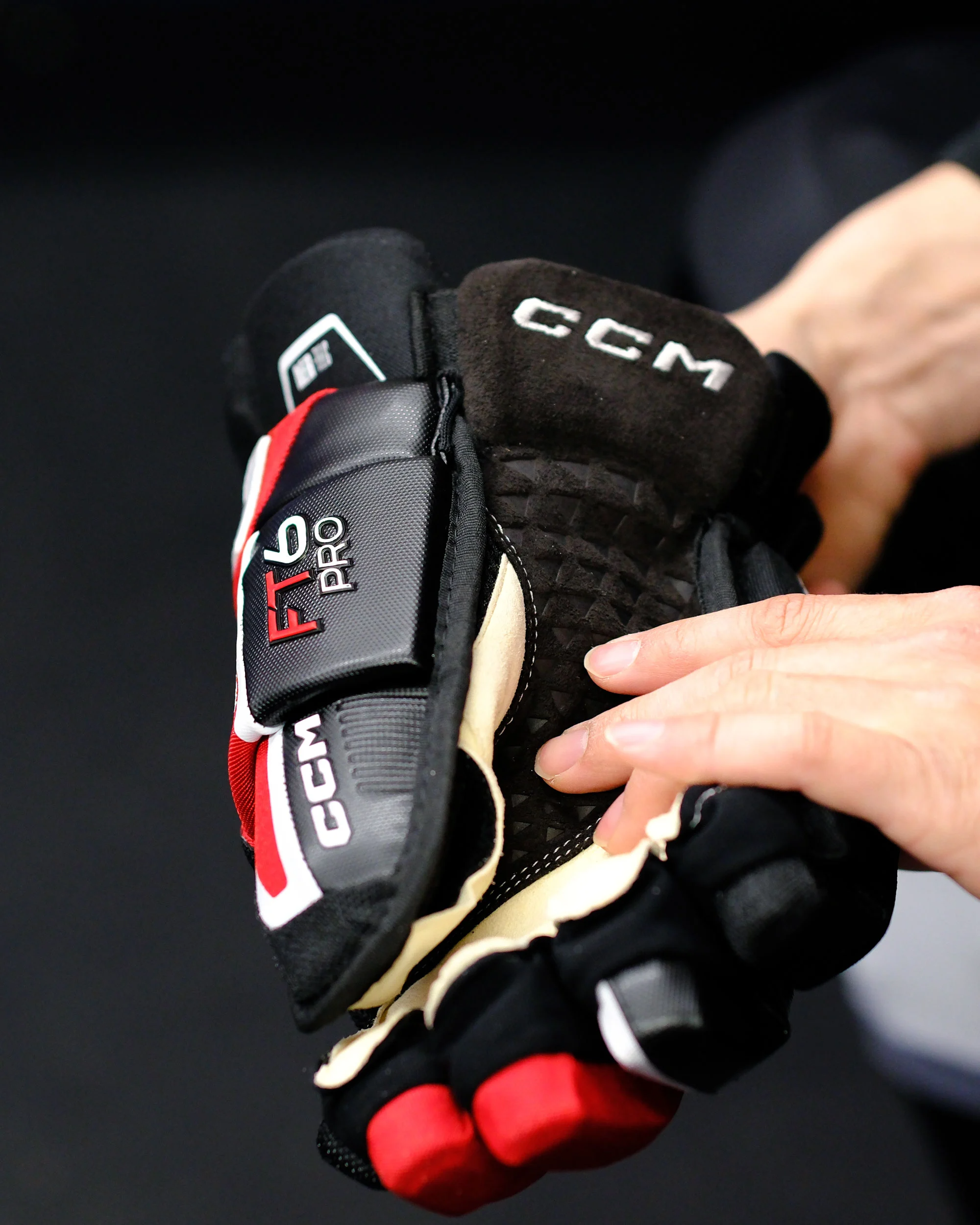The right fit for Player GloveUpdated a year ago
 When fitting a hockey glove, it is important to first decide on the style of glove that you prefer. This is entirely a personal choice and is usually influenced by what you have worn in the past. A tighter-fitting glove will have less negative space and will feel like a second skin, providing a better feel on the fingers and palm. However, you may notice a reduced amount of mobility around the wrist. On the other hand, a looser or more traditional fit glove will feel more spacious and fit wider in all areas.
When fitting a hockey glove, it is important to first decide on the style of glove that you prefer. This is entirely a personal choice and is usually influenced by what you have worn in the past. A tighter-fitting glove will have less negative space and will feel like a second skin, providing a better feel on the fingers and palm. However, you may notice a reduced amount of mobility around the wrist. On the other hand, a looser or more traditional fit glove will feel more spacious and fit wider in all areas.
 It's also important to consider the gap between the cuff of the glove and the user's elbow pad. You should try to minimize this gap as much as possible. If the player prefers a glove with a shorter cuff, you may want to consider using an item such as a slash or wrist guard to protect the area in between.
It's also important to consider the gap between the cuff of the glove and the user's elbow pad. You should try to minimize this gap as much as possible. If the player prefers a glove with a shorter cuff, you may want to consider using an item such as a slash or wrist guard to protect the area in between.
Things To Consider:
- Age
- Level of Play
- Desired Fit (Loose or Tight)
Fitting For Growth Room:
 When fitting a growing player with a glove, it's important to leave some room for growth, but not too much that it affects their performance. To check if the glove is too big, ask the player to put their hand inside it as if they were playing. Use your index finger to measure the extra space between the top of the palm and the cuff's edge. The space should be no more than the width of your index finger. Then, ask the player to press their fingers against the palm, ensuring their pinky finger is at least 3/4" into the pinky slot. To check if the glove fits well, pick up the stick by the shaft. If it's challenging to do so, the glove is likely too big.
When fitting a growing player with a glove, it's important to leave some room for growth, but not too much that it affects their performance. To check if the glove is too big, ask the player to put their hand inside it as if they were playing. Use your index finger to measure the extra space between the top of the palm and the cuff's edge. The space should be no more than the width of your index finger. Then, ask the player to press their fingers against the palm, ensuring their pinky finger is at least 3/4" into the pinky slot. To check if the glove fits well, pick up the stick by the shaft. If it's challenging to do so, the glove is likely too big.
To check if the glove is too small, ask the player to put their hand inside it as if they were playing. Feel along the inner cuff above the palm material to check if their palm is spilling over the cuff. Ask the player to press their fingers against the palm to see if their fingers fit in each finger slot without touching the edges.
Fitting For True Size:
 It's important to keep in mind that when choosing the right size of a glove, it should fit snugly as itwill stretch and compress over time. To determine the correct size, put the glove on your hand and ensure that your fingers fit comfortably into the finger slots without pushing into the gussets. Your palm should also fit comfortably without spilling over the end of the palm material and onto the inner cuff.
It's important to keep in mind that when choosing the right size of a glove, it should fit snugly as itwill stretch and compress over time. To determine the correct size, put the glove on your hand and ensure that your fingers fit comfortably into the finger slots without pushing into the gussets. Your palm should also fit comfortably without spilling over the end of the palm material and onto the inner cuff.
 Different gloves and brands will position the thumb slightly differently, so it's recommended to try on a few until you find a comfortable pair. There are also different types of palms available, such as a regular "Nash" leather palm or a more durable all-leather pro palm. Some gloves even have high-density foams and plastic inserts for added protection.
Different gloves and brands will position the thumb slightly differently, so it's recommended to try on a few until you find a comfortable pair. There are also different types of palms available, such as a regular "Nash" leather palm or a more durable all-leather pro palm. Some gloves even have high-density foams and plastic inserts for added protection.
It's important to select a glove with a protection level that matches your playing style. We recommend getting the highest level of protection that you can afford. To find your best fit, compare your height, weight, and age to the charts provided, and measure (in inches) from the tip of your middle finger(or which finger is longest) and measure all the way down to the bottom of your palm. Record this measurement and multiply by two. This will be roughly the size of glove you need. This measurement will determine the recommended glove size (e.g., if you measure 14.5", you will want a 15" glove).